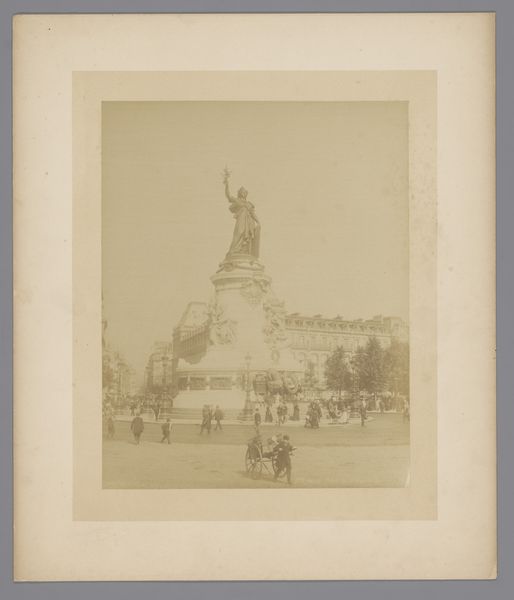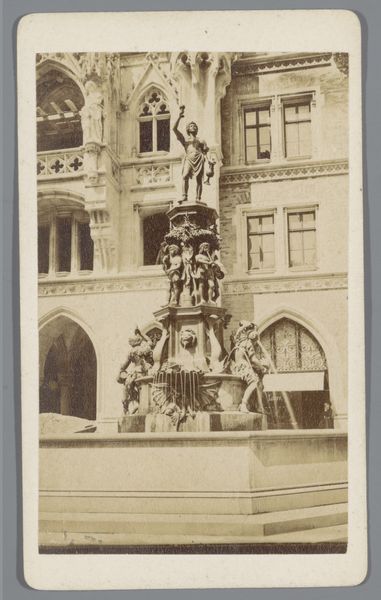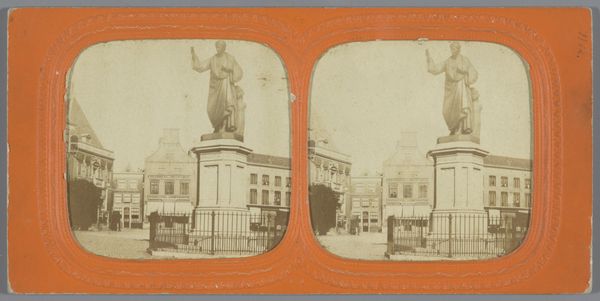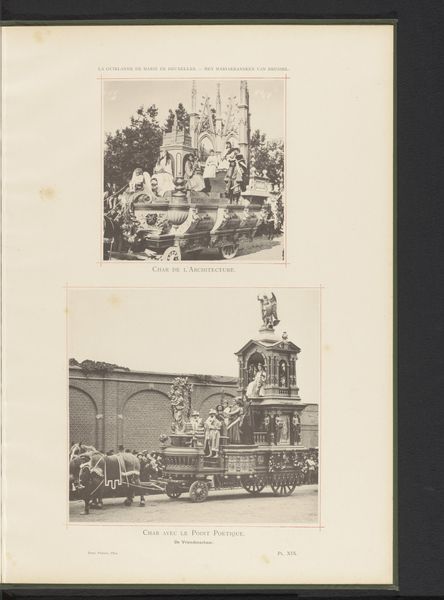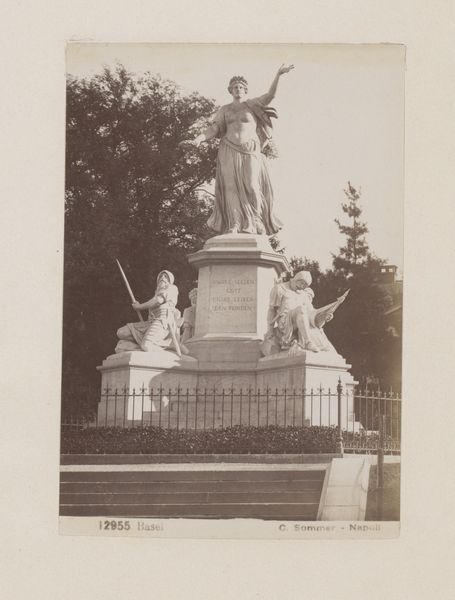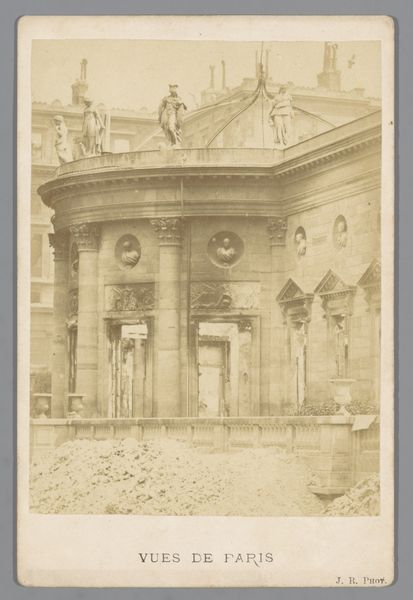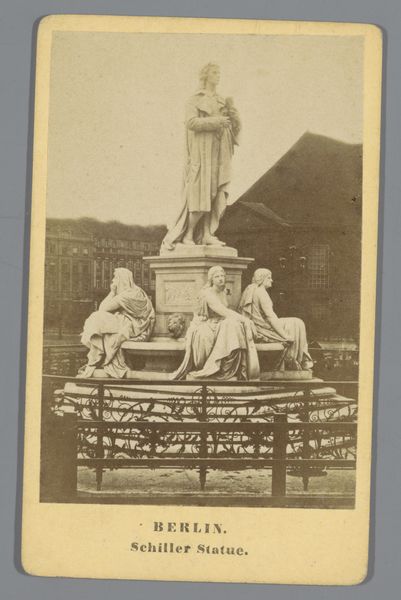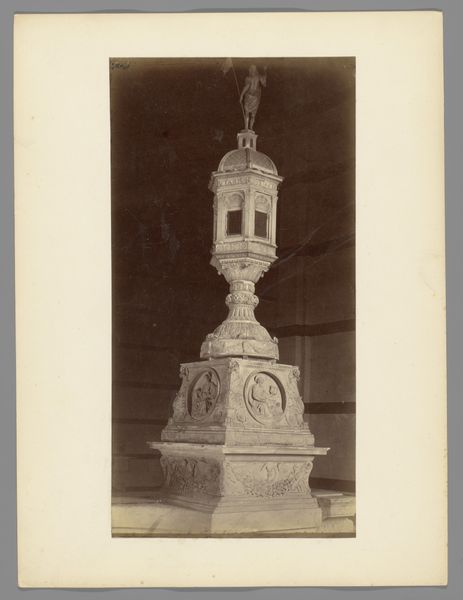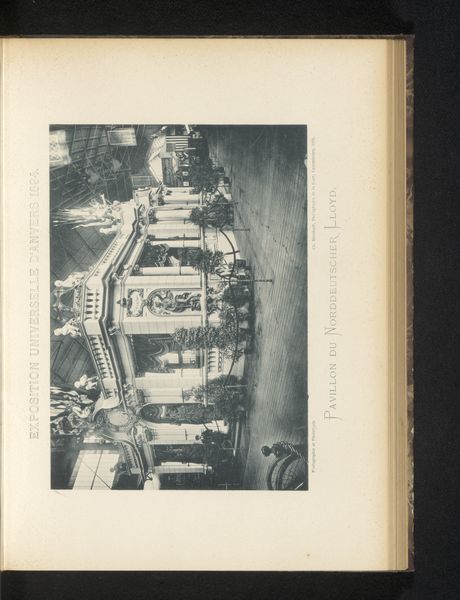
photography, albumen-print
#
neoclassicism
#
photography
#
cityscape
#
albumen-print
Dimensions: height 105 mm, width 62 mm
Copyright: Rijks Museum: Open Domain
Curator: Here we have an albumen print from the mid-19th century, showing the Nationale Monument Pro Patria on the Place des Martyrs in Brussels. The image captures a cityscape dominated by a neoclassical monument. Editor: It has a strikingly mournful atmosphere. The sepia tones and slightly blurred edges give the scene a dreamlike, elegiac quality. Curator: Indeed. Let's consider the composition. The photographer has positioned the camera to emphasize the monument's hierarchical structure. Notice the base, adorned with seated figures, then the plinth with the inscription "PATRIA," culminating in the standing allegorical figure at the apex. The linear architecture in the background reinforces a sense of order and solemnity. Editor: The inscription "PATRIA" speaks volumes, of course. This wasn't just a monument, it was a symbol erected on a square renamed to honor those who died for their country. The seated figures remind me of caryatids—they’re so static, each draped figure conveying intense grief. Do you see it similarly? Curator: I see them, rather, as architectural elements imbued with symbolic weight, upholding the conceptual framework of the nation itself. Look at the use of line and form to establish a sense of stability—it communicates an immutable ideal. Editor: Yet, these symbols are culturally contingent, aren’t they? The allegorical figure embodies abstract notions of patriotism. However, what exactly those ideals represent shifts with time and context. The monument becomes a vessel for collective memory, a tangible link to the sacrifices of the past and the present aspirations of the nation. Curator: From a formal standpoint, observe how the photographer has played with light and shadow. Notice the details, especially the play between positive and negative space and the interplay between rigid geometric shapes and the curves of the sculptures. The very process of photography here contributes a level of detailed analysis beyond pure subject matter. Editor: The choice of albumen print, popular then for its ability to capture sharp detail, paradoxically contributes to this pervasive sense of loss we began with. It almost imbues the entire scene with an element of haunting. Ultimately, both the physical monument and its photographic representation served as sites of constant negotiation, continually shaping Belgium’s identity through cultural remembrance. Curator: A convergence, perhaps, of structure and sentiment? Editor: Yes, precisely that point of confluence.
Comments
No comments
Be the first to comment and join the conversation on the ultimate creative platform.
